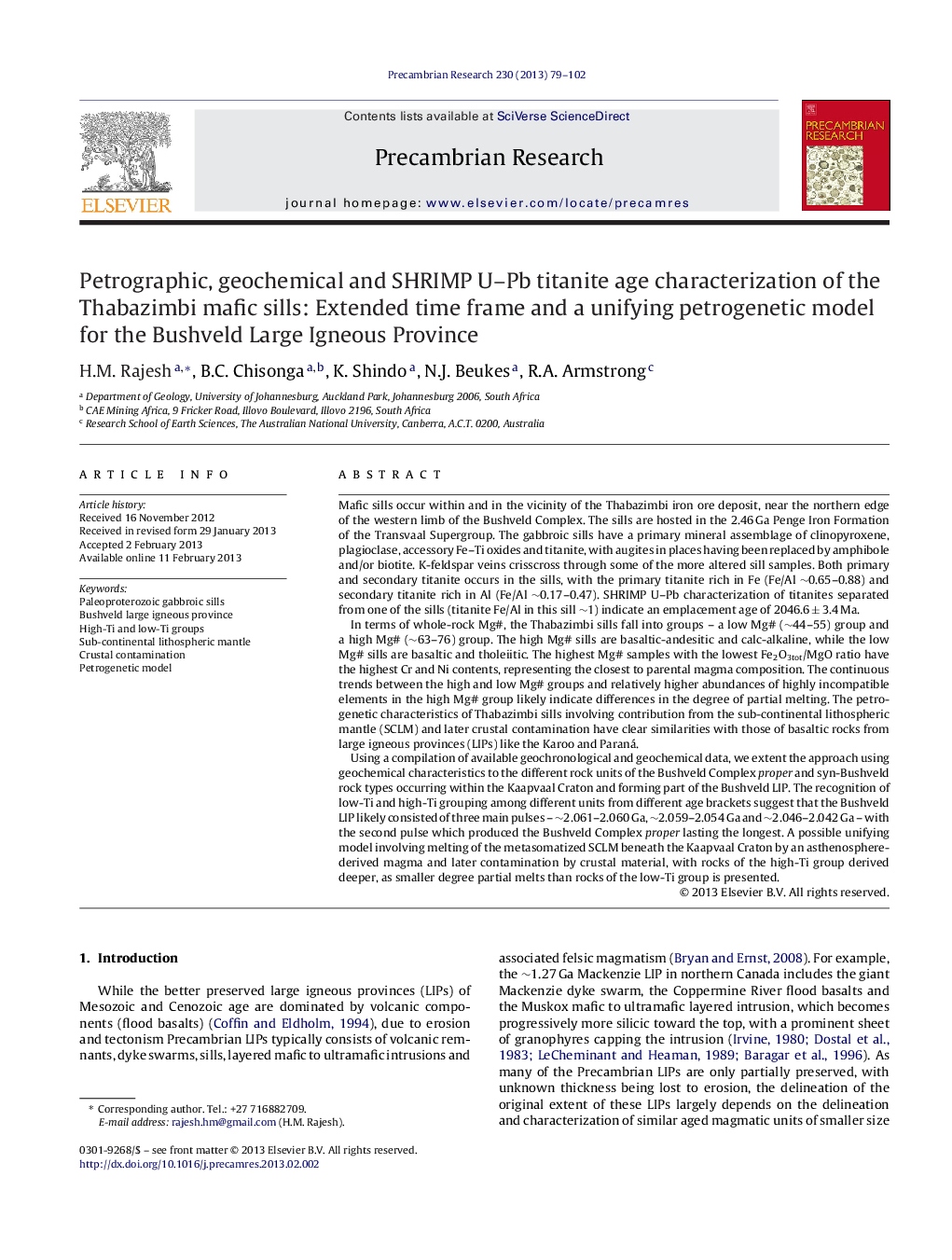| Article ID | Journal | Published Year | Pages | File Type |
|---|---|---|---|---|
| 4723242 | Precambrian Research | 2013 | 24 Pages |
Mafic sills occur within and in the vicinity of the Thabazimbi iron ore deposit, near the northern edge of the western limb of the Bushveld Complex. The sills are hosted in the 2.46 Ga Penge Iron Formation of the Transvaal Supergroup. The gabbroic sills have a primary mineral assemblage of clinopyroxene, plagioclase, accessory Fe–Ti oxides and titanite, with augites in places having been replaced by amphibole and/or biotite. K-feldspar veins crisscross through some of the more altered sill samples. Both primary and secondary titanite occurs in the sills, with the primary titanite rich in Fe (Fe/Al ∼0.65–0.88) and secondary titanite rich in Al (Fe/Al ∼0.17–0.47). SHRIMP U–Pb characterization of titanites separated from one of the sills (titanite Fe/Al in this sill ∼1) indicate an emplacement age of 2046.6 ± 3.4 Ma.In terms of whole-rock Mg#, the Thabazimbi sills fall into groups – a low Mg# (∼44–55) group and a high Mg# (∼63–76) group. The high Mg# sills are basaltic-andesitic and calc-alkaline, while the low Mg# sills are basaltic and tholeiitic. The highest Mg# samples with the lowest Fe2O3tot/MgO ratio have the highest Cr and Ni contents, representing the closest to parental magma composition. The continuous trends between the high and low Mg# groups and relatively higher abundances of highly incompatible elements in the high Mg# group likely indicate differences in the degree of partial melting. The petrogenetic characteristics of Thabazimbi sills involving contribution from the sub-continental lithospheric mantle (SCLM) and later crustal contamination have clear similarities with those of basaltic rocks from large igneous provinces (LIPs) like the Karoo and Paraná.Using a compilation of available geochronological and geochemical data, we extent the approach using geochemical characteristics to the different rock units of the Bushveld Complex proper and syn-Bushveld rock types occurring within the Kaapvaal Craton and forming part of the Bushveld LIP. The recognition of low-Ti and high-Ti grouping among different units from different age brackets suggest that the Bushveld LIP likely consisted of three main pulses – ∼2.061–2.060 Ga, ∼2.059–2.054 Ga and ∼2.046–2.042 Ga – with the second pulse which produced the Bushveld Complex proper lasting the longest. A possible unifying model involving melting of the metasomatized SCLM beneath the Kaapvaal Craton by an asthenosphere-derived magma and later contamination by crustal material, with rocks of the high-Ti group derived deeper, as smaller degree partial melts than rocks of the low-Ti group is presented.
► SHRIMP U–Pb titanite age of Thabazimbi sills indicate they are syn-Bushveld. ► Bushveld LIP consisted of three pulses with separate low-Ti and high-Ti groups. ► Unifying model involve melting of the metasomatised SCLM and later crustal contamination.
